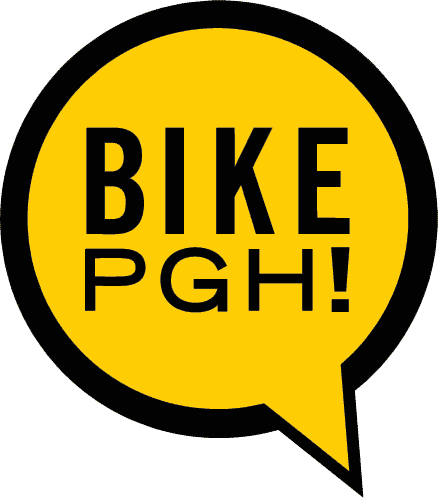There are a couple of ways that SPC uses the Bikely (and other mapped) data.
The first is to identify locations at which we might want to do a count of bicycle activity. If cyclists using a route that seems unusual, or appears on more than one map, SPC might put a person on the streetcorner to count how many other cyclists are out there. Local elected officials always want to know "how many cyclists are there?" when they are approached with bike infrastructure questions. It's a hard question to answer. Often, the response is simply evidence that cycling IS occurring, and certain specific areas are hotbeads that need and deserve priority attention.
The second is to work with PennDOT and other road sponsors in the design and implementation of bicycle and pedestrian accommodation in a particular roadway design project. For example, PennDOT has to complete a pedestrian-bicycle checklist for each (large) project that they do (routine maintenance is excluded). Neither they nor SPC can speak knowlegably about bicycle use on every road in the 7,000 square mile region. So, we seek input. Bikely maps, etc, might let them know that cyclists do use a certain road, or a portion of a certain road. It gives then the nudge, if you will, to look closer, and ask more question. Documentation is ALWAYS good when dealing with bureaucracy.
Finally, SPC is doing bike suitability maps of the counties that surround the City of Pittsburgh. Draft maps for Allegheny and Greene Counties are available for review and comment on the SPC website. Butler and Indiana County drafts should be up before the end of the year. In identifying local roads that are "bike friendly" SPC starts with the local cycling community, and asks their opinion. Data resources like Bikely are used to verify/augment the knowldge base of the local cyclists that have volunteered in these efforts.
SPC is ALWAYS looking for input on biking issues. The number of cyclists that are out there, and the routes/frequency that they use are the pieces of information that is most useful. If there is a way that you are compiling data on where you ride, or where you absolutely refuse to ride, SPC is interested. Let them know what methodology/mapping technology works for you. The intent is not to create more work, but to make better use of data that is already being created.
Check out the maps that have been completed. Leave your email address, and let us know if you have suggestions as to how we can make it easier for you to participate in these efforts.
P.S. SPC will be looking to start another county in early Spring. Beaver, Lawrence, Westmoreland, Washington, Armstrong and Fayette all remain to be done. If you belong to a cycling group in one of these counties, SPC would love to hear from you.


